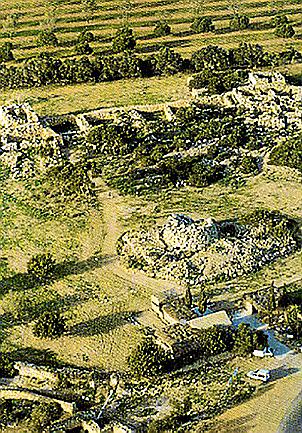To coincide with the centenary of the first excavations at the Talayotic settlement of Capocorb Vell in Llucmajor, the town hall is to promote all the municipality's prehistory for its cultural and tourist value.
Llucmajor's tourism councillor, Lucia Escribano, says that the project will be highly ambitious. Capocorb Vell is, she notes, one of the largest Talayotic sites in the Mediterranean, but for many years there haven't been clearly defined projects for promotion.
Over recent weeks, representatives from the town hall and the Council of Majorca have visited the site, and the project that is planned will comprise three phases - restoration, signage and conversion to a museum. Later on, Escribano suggests that there will be an interpretation (information) centre as well.
At present, the site is controlled by its owner. There is a two euro entrance fee and a bar which is used primarily by hunters, tourists and cyclists.
Excavation work first began in 1917 and was carried out by the Institute of Catalan Studies under the direction of archaeologist Josep Colominas, who was also one of the main driving forces being the Catalonia Museum of Archaeology in Barcelona. In launching the project, the town hall also intends to hold a large exhibition to explain the site's history and to display pieces from it that are held in the Barcelona museum.
Escribano adds that Capocorb is a "wonder" to which greater value needs to be attached. "We are committed to reviving this archaeological jewel."
The site consists of five talayots - two square and three circular - with a total of 28 dwellings. It is known that it was inhabited from 900BC until the start of the Roman era in the late second century BC.


No comments
To be able to write a comment, you have to be registered and logged in
Currently there are no comments.